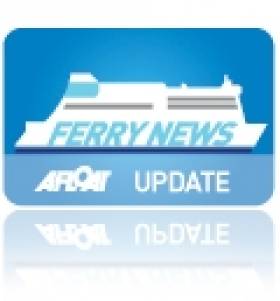Displaying items by tag: Fast ferry repairs
Manx Fast-Ferry Sailings Operate On Reduced Engines
#FastFerryRepairs - Following the planned withdrawal of Manx fast-ferry Manannan from Liverpool-Douglas service last Wednesday afternoon (6 Aug) as previously reported, it has emerged that it will take longer than anticipated to complete repairs to a damaged engine of the craft.
According to operators, Isle of Man Steam Packet, the Manannan has been running on three engines since a crankshaft failed. In the interim period the affected engine has been fully disassembled and the failed crankshaft has been removed.
Precautionary checks on the engine block, necessary before the crankshaft can be replaced and the engine rebuilt, have revealed more extensive damage than first expected.
It was hoped that the commitment and careful scheduling of additional resources over the next fortnight would allow repairs to be completed while Manannan was in port overnight. The intention was to ensure no further sailings would be affected and the vessel would be back to full power for the Isle of Man Festival of Motorcycling.
However, because of the detailed inspection findings, Manannan will continue to operate on three engines during the Festival of Motorcycling, meaning journey times will be slightly longer than advertised. To read more click this LINK and for latest information on all sailings, click HERE.





























































